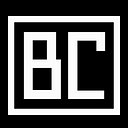Member-only story
Revamp Your Accordion Menus: Exploring Captivating Chevron Animations
How to build delightful open/close animations
There are times when you want to go the extra mile and make some parts of your front-end shine. These are the moments when you want to give your web pages that extra flair and delight your users. If you want user engagement, you need to make your content stand out.
One effective approach is to increase the visibility of common UI elements. Think of checkboxes, radio buttons, text inputs, and other familiar web elements that you encounter every day. The idea here is to ensure that users take notice, especially during mundane activities like form completion, list filtering, or configuration of settings. By elevating these elements, you capture the user’s attention and provide a more enjoyable user experience in various interactions.
Chevrons
Chevrons, those familiar symbols used to indicate the expand/collapse state of accordion menus, are a good example of a UI element that benefits from animations. Instead of simply rotating in place, these chevrons can have a more engaging transformation. Imagine them as flying V shapes, gracefully animating as they transition between open and closed states. In this article, we’ll explore the power of SVG SMIL animations and delve into the fascinating world of enhancing chevron interactions.
Let’s start from the end and have a look what we’re aiming for. Knowing what the end result looks like helps to better understand the different steps involved in developing the animation. Here’s the desired outcome: a chevron that animates smoothly and bends naturally.
The above animation is primarily constructed using two key web concepts viewed from a higher level. They are:
- Scalable vector graphics (SVG)
- Animation through keyframes
To begin, let’s examine the SVG markup by creating an empty SVG element. Take a look at the following code snippet, which generates a scalable vector of size 16 by 16 pixels. It conveniently uses an…

